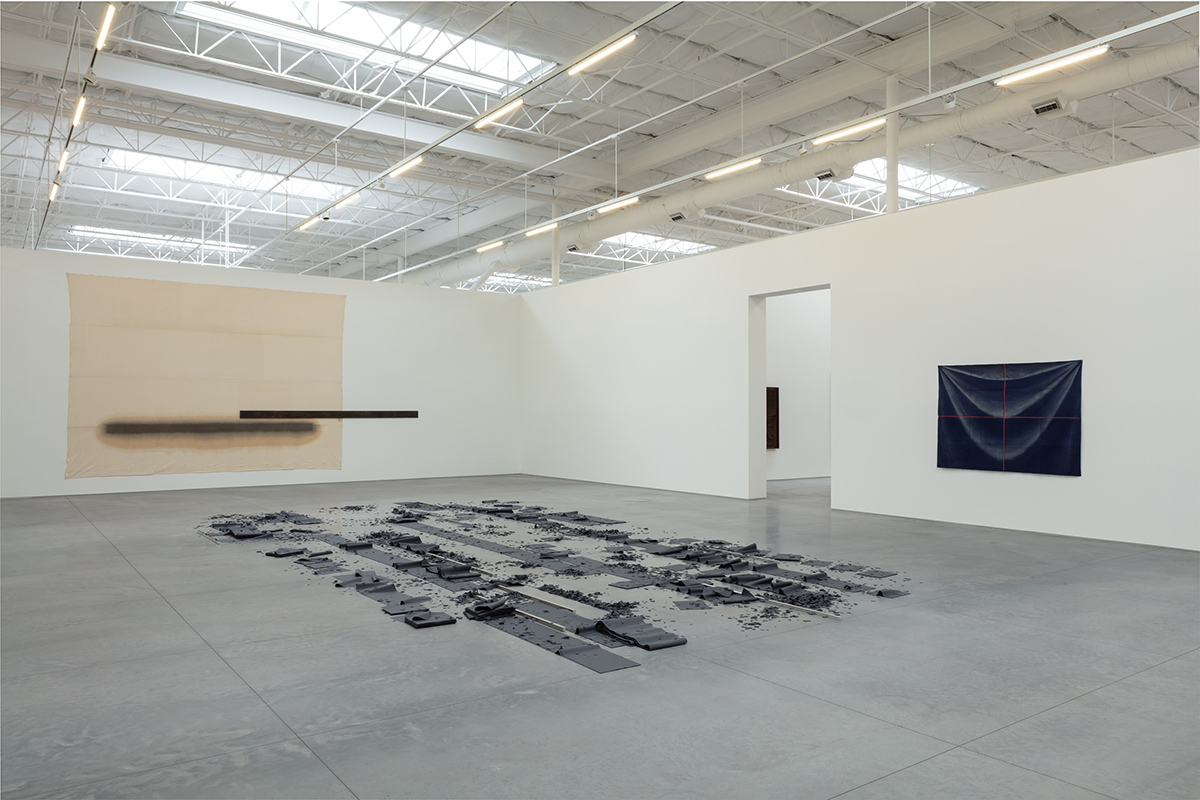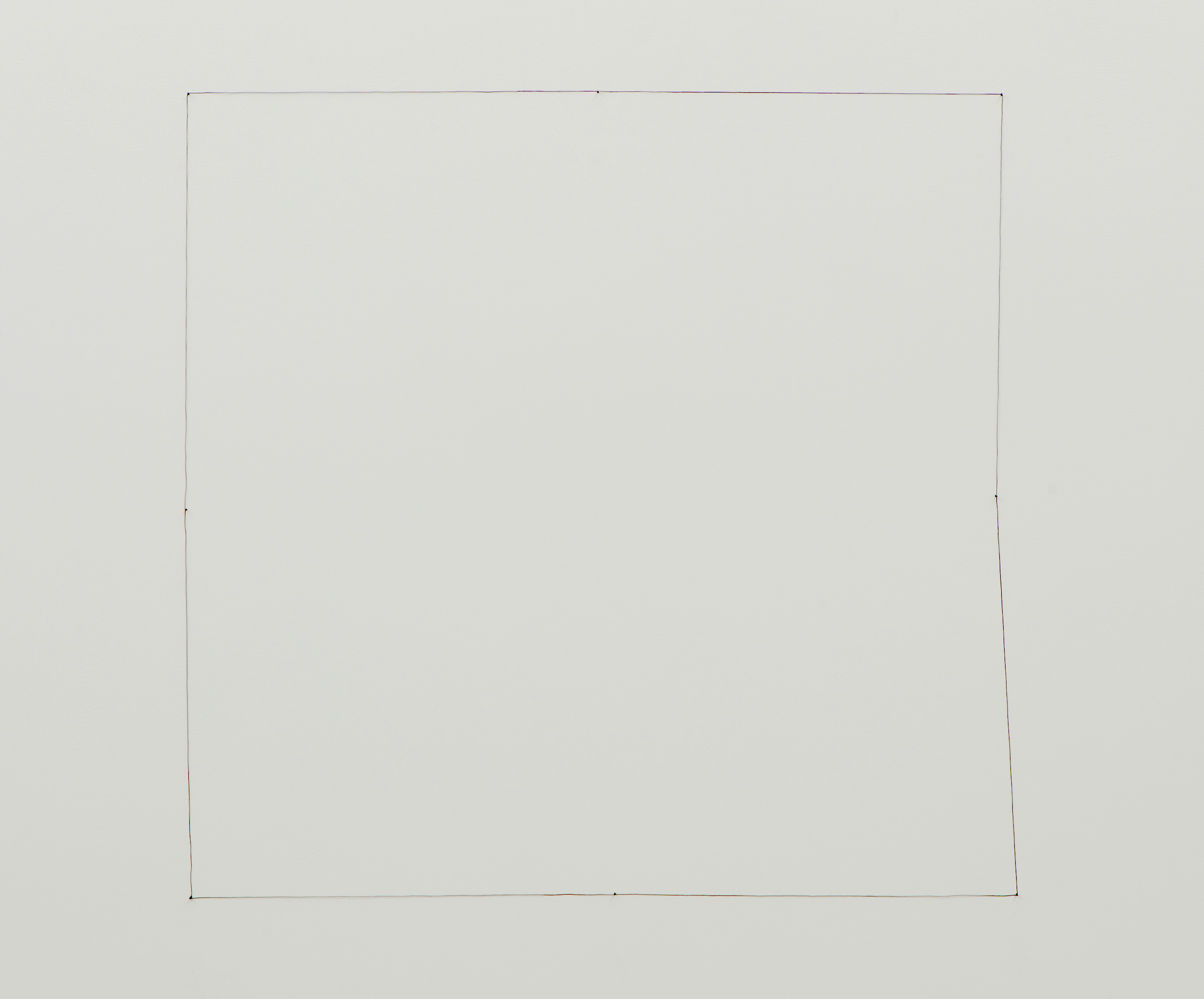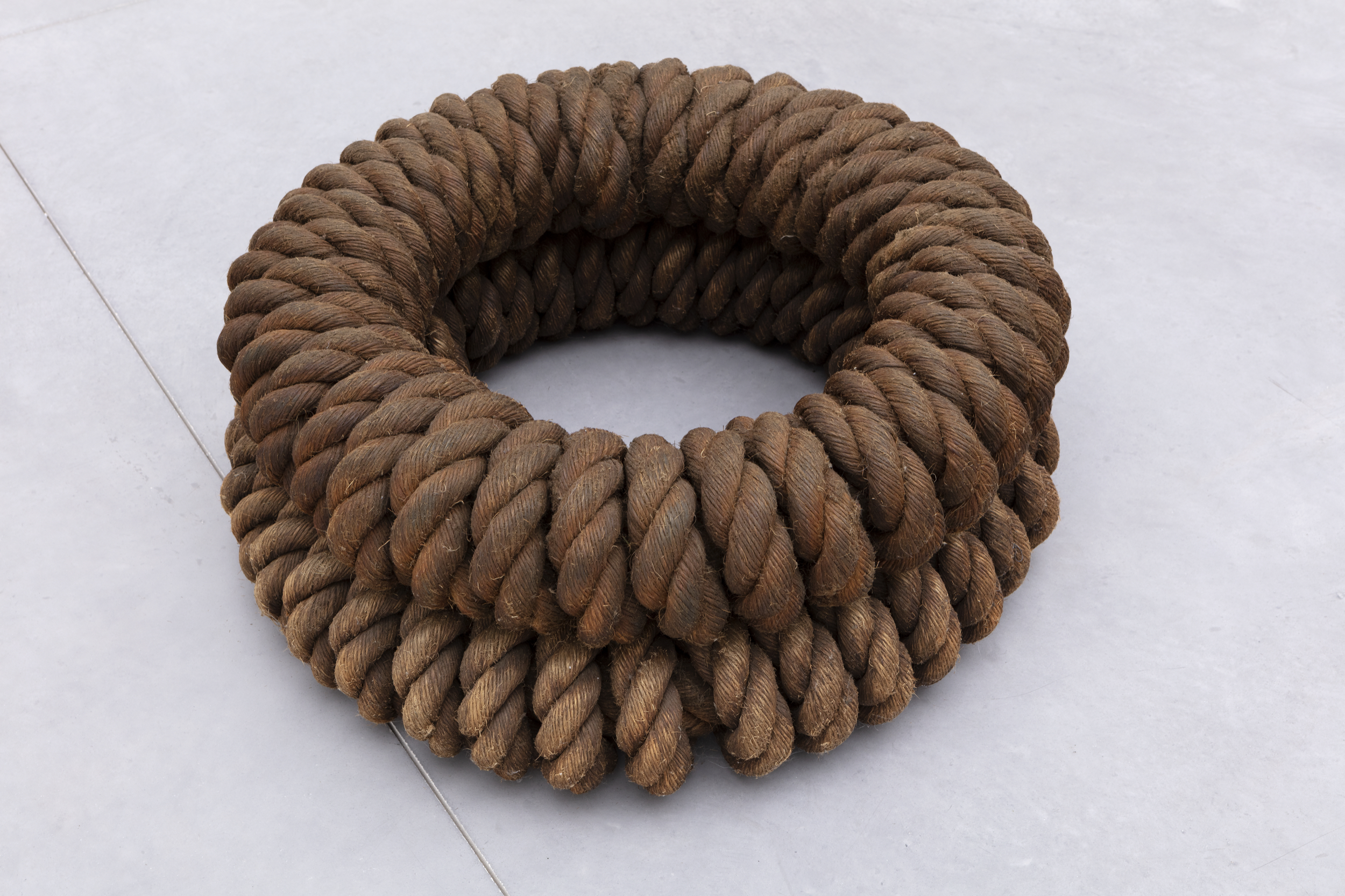Nov. 18 Post-Minimalism
 Topologies, 2018. Gallery 3: work by Koji Enokura, Barry Le Va, and Park Hyunki
Topologies, 2018. Gallery 3: work by Koji Enokura, Barry Le Va, and Park HyunkiPost-Minimalism grew out of American Minimalism during the late 1960s, a reaction against the impersonal and rigid forms seen in the earlier movement. Post-Minimalism is a broad category that incorporates elements of Anti-Form, Process Art, and Conceptual Art. It is categorized by softer forms, unusual art materials like latex or felt, a greater reflection of the artist's touch, and an acute awareness of the viewer's physical relationship to the artwork.
For this month's session, we will look at work by Richard Tuttle, Richard Serra, Eva Hesse, Barry Le Va, and Jackie Winsor. To prepare, read Richard Tuttle's interview from Art 21 here and the excerpt from Jackie Winsor's 1998 interview here.
 Richard Tuttle (American, born 1941) 1st Wire Bridge, 1971. Wire and nails. 37 1/2 x 38 1/2 inches (95.2 x 97.8 cm). The Rachofsky Collection
Richard Tuttle (American, born 1941) 1st Wire Bridge, 1971. Wire and nails. 37 1/2 x 38 1/2 inches (95.2 x 97.8 cm). The Rachofsky Collection Jackie Winsor (American, born Canada 1941). Small Double Circle, 1969. Hemp. 12 x 29 x 29 inches (30.5 x 73.7 x 73.7 cm). Collection of Deedie Potter Rose
Jackie Winsor (American, born Canada 1941). Small Double Circle, 1969. Hemp. 12 x 29 x 29 inches (30.5 x 73.7 x 73.7 cm). Collection of Deedie Potter Rose Richard Serra (American, born 1938). Close Pin Prop, 1969–1976. Rolled lead. Tube: 37 3/4 x 9 1/2 inches (95.9 x 24.1 cm); pole: 79 x 3 1/2 inches (200.7 x 8.9 cm). The Rachofsky Collection
Richard Serra (American, born 1938). Close Pin Prop, 1969–1976. Rolled lead. Tube: 37 3/4 x 9 1/2 inches (95.9 x 24.1 cm); pole: 79 x 3 1/2 inches (200.7 x 8.9 cm). The Rachofsky Collection
